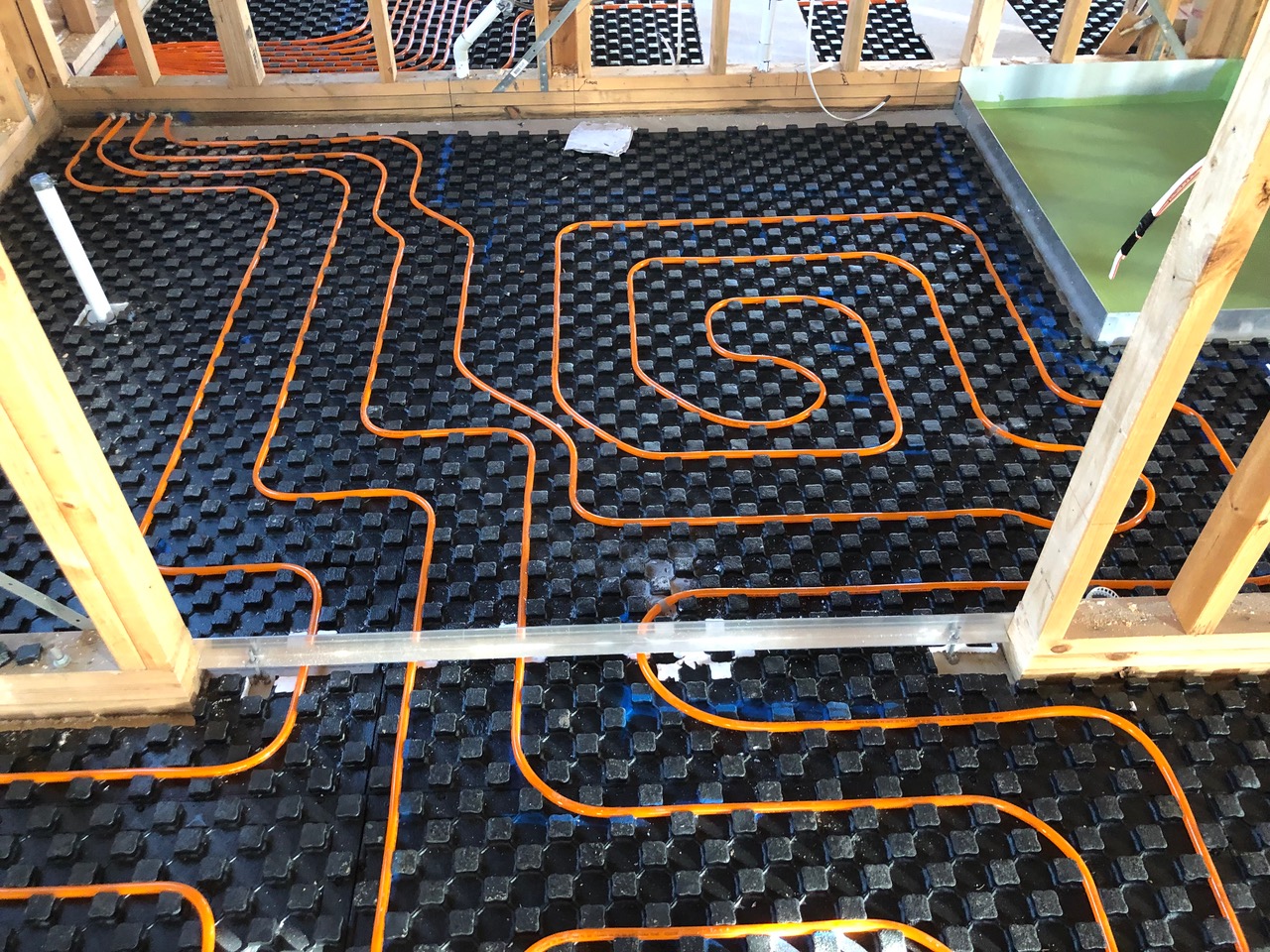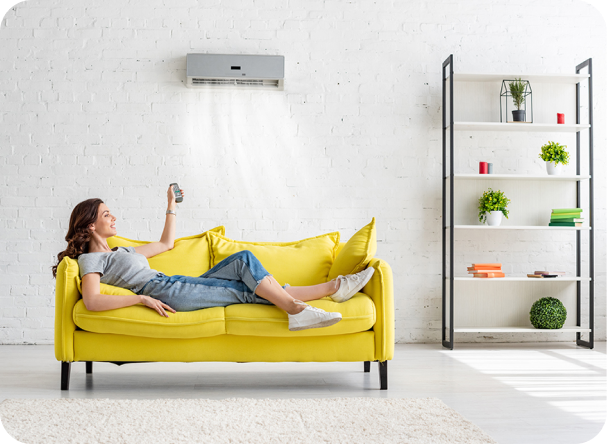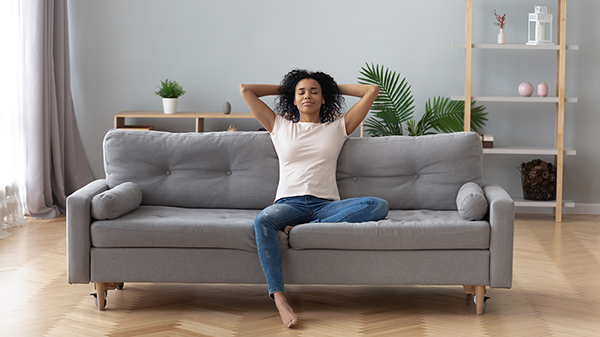
What is Hydronic Heating?
April 26, 2021
Air Conditioning and Asthma
March 22, 2022Evaporative Cooling Vs Air Conditioning

Regardless of the weather outside, you want to be comfortable in your own home. You’re ready to invest in reliable, effective air conditioning!
And while you want air circulating through your living space to be comfortable both in terms of temperature and humidity, you also want to be environmentally responsible.
You’ve heard that both evaporative cooling and split system air conditioning systems are effective modern solutions to keeping the temperatures and humidity levels in your Melbourne home comfortable while minimising how much impact you have on the environment. But before you make a major decision like this, you need the facts: How do they work? What are the pros and cons of each approach? And which one is really best for you?

Evaporative Cooling and Split Systems
Let’s start with evaporative coolers. These systems have several different names, including swamp coolers, evaporative air conditioners, desert coolers, wet air coolers, and swamp boxes. Evaporative cooling takes a very different approach to air conditioning compared to the other options you have, including split system air conditioning systems.
In evaporative cooling, a fan is used to pull hot air into the evaporative unit. There, the air passes along a series of surfaces, usually referred to as pads, which are soaked in cool water. The heat in the air is transferred to the colder water, which significantly reduces the air temperature and increases its humidity. The freshly cooled air is then circulated through your home and exits via a window or door. The result of evaporative cooling is a continuous cycle of cool, fresh air.
On the other hand, split systems work more like conventional central air conditioning units but without complex ducting systems. Instead, hot and humid indoor air is pulled into the indoor unit by powerful fans. The heat and humidity are extracted from indoor air and released outdoors while the cooler air is released back into the indoors.
The result of split system cooling is a continuous flow of cool, filtered indoor air circulated through the room. Homeowners can use multiple split systems to precisely control the temperatures in various rooms, and, as an added bonus, most split systems can be remote controlled.
Differences Between Evaporative and Split System
Now that we’ve talked about how evaporative and split systems work. Let’s review the basic differences between the two cooling systems:
- Evaporative cooling uses water, while split systems use a gas refrigerant.
- An evaporative unit provides a continuous flow of fresh air while a split system recycles indoor air.
- Evaporative coolers require multiple windows or doors to be open to work correctly, but split systems do not.
- Evaporative cooling works best in dry climates, but split systems work regardless of the humidity levels.
- Evaporative cooling units cannot provide different temperatures in different zones, but that is something that split systems are incredibly effective at doing.
However, these systems have certain things in common, starting with the obvious: they are supposed to make the air in your home much more comfortable, including temperature and humidity levels. They also use filters to clean any air cycled through the house and provide relatively quiet operation (in split systems, the indoor unit is extremely quiet). They also require a minimum amount of space in your home and have been designed to use energy effectively.
Is Evaporative Cooling Effective?
In climates with low humidity, evaporative cooling is a highly effective way to regulate indoor temperature. It costs less to purchase, install, and operate than split systems, although it requires more maintenance. Evaporative cooling also enables you to control humidity and temperature simply by opening windows or doors in areas that don’t need cooling. And in dry climates, you can save significantly on the cost of keeping your home cool.
How Do Split Systems Work?
In a split system, there are two major parts: the indoor air handling unit, which is what you see on a wall, and the outdoor unit, known as the condenser. Each unit is responsible for performing specific tasks related to making your room or home more comfortable.
Hot, humid air is recirculated through the room through the air handling unit. Next, the coil inside the air handling unit gets down to approximately 3 degrees via gas refrigerant moving around the indoor to the outdoor unit.
Do Evaporative Coolers Work in High Humidity?
Evaporative coolers are more effective in low humidity climates, and there is no getting around that fact. As relative humidity levels increase, the effectiveness of evaporative coolers decrease. When used in humid climates, they will simply add more humidity to the indoor air and make the occupants even more uncomfortable. These coolers work best in environments with a low relative humidity level, which is most of the southern areas in Australia, including Melbourne.
Pros and Cons of Evaporative Cooling
Let’s look at some of the pros of evaporative cooling:
- Environmentally friendly
- Indoor Air Quality improved
- Adds humidity to the air
- A continuous cycle of fresh air
- Energy-efficient with low carbon footprint
- Low cost
Of all the approaches to cooling, evaporative coolers are considered the most environmentally friendly and green because they use water instead of a gas refrigerant. They also use less energy than other cooling technologies.
The ventilation required for evaporative cooling to be effective leads to more optimal indoor air quality. The air is not only moved through the area but is also filtered, which means many contaminants are removed. In fact, evaporative coolers provide you with a continuous cycle of fresh air, unlike other systems that simply reuse indoor air to achieve cooling. In addition, because it adds humidity to the indoor air, it can provide much-needed relief to those suffering from sinus issues and dry skin.
Compared to other approaches to cooling, evaporative cooling is more energy efficient because it works better on hot days. Think about it this way: warmer temperatures usually lead to more moisture in the air, leading to more water for the system to evaporate. This also means it has a much smaller carbon footprint than air conditioning.
Every technology has its cons, so here are the cons of evaporative cooling:
- Require a steady supply of water
- Need more maintenance
- Higher indoor humidity
Because water serves as the source in an evaporative cooler, they need a steady supply of water. Therefore, if you live in an area where the water supply is inconsistent or highly limited, an evaporative cooler might not be the best option for you.
Evaporative coolers are going to need more maintenance than air conditioning systems. If they are not cleaned regularly (every two years), dirt and grime can be promoted, generating some unpleasant odours. In hot climates, the pump, reservoir, filters, and pads need to be checked yearly. The pads in today’s coolers are long life and should generally last ten years depending on the climate and usage.
Pros and Cons of Air Conditioning
Now let’s look at the pros and cons of split system air conditioning, starting with the pros:
- Energy efficient
- Versatile
- Cost-efficient
- Indoor air quality is improved
- Can provide heating and cooling
- Low maintenance
Split systems are energy efficient, especially when compared to conventional air conditioning systems. This is due, in part, to the fact that they are ductless, which means they don’t have issues with losses in the ductwork.
Homeowners can use split systems for air conditioning to control the environment of a single zone, an entire room, or an entire house or office. This makes them highly versatile. And because they are so versatile, they are more cost-efficient: the cool or warm air is only delivered where needed.
A common alternative to this solution is ducted air conditioning. Generally, ducted air conditioning costs more to install and typically cools the entire house. You can, in some scenarios, opt for a zoned ducted system, but ultimately wall-mounted split systems offer greater individual climate control.
When a split system is used, the same unit provides heating and cooling, which isn’t possible with an evaporative cooling system. In addition, indoor air quality is improved because of the filters used for the air cycled through the unit. And don’t forget that split systems are also very low maintenance, and the indoor component that does need to be cleaned is simple enough to handle without requiring a technician.
Now for the cons related to split system air conditioning:
- Cost
- Location constraints
- Outdoor fan noise
Split system air conditioning costs more than traditional air conditioning systems but may not be as expensive as you think.
For a split system, the exterior and interior units must be within manufacturer guidelines to achieve optimum performance. These guidelines include the maximum length of piping that can be used to connect them. This can pose a problem in extremely tall buildings or apartment complexes. And, while split systems are very quiet indoors, the compressor unit can be noisy. Again, this may pose a problem in densely populated areas.
The Best Cooling System For Your House
So, which is best for your home: an evaporative cooling system or a split system? The answer to that depends heavily on your air conditioning goals and what the humidity levels are where you live. First, let’s summarise what we’ve said about these cooling systems.
Evaporative coolers perform exceptionally well in areas where the relative humidity is low and are arguably the more environmentally friendly of the two. They will cycle cool, comfortable air through your home, and you’ll be able to enjoy fresh air rather than recycled indoor air. They are the cheapest option regarding initial cost, installation, operating costs, and energy efficiency.
While they do require quite a bit of maintenance, they don’t need the same level of pipework that a split system does. However, they don’t work well in high humidity levels, and they need a continuous water supply.
Unlike evaporative coolers, split systems work well regardless of the local humidity levels and don’t require an open window or door to operate. So, if you are looking for a way to control temperatures in multiple rooms or areas that will require different settings, split systems are the way to go–and don’t forget that they support remote control. Also, keep in mind that split systems are a bit more expensive and require skilled installation, but they are still energy efficient and require minimal maintenance. But, on the plus side, split systems can perform both heating and cooling operations.
At Simply Air Heating and Cooling, we’re happy to answer any questions that you have about these systems and work with you to assist in determining which cooling system is suitable for your Melbourne home. So give us a call today!
 Schedule a quote
Request a callback
Schedule a quote
Request a callback

Call us Mon-Fri: 8:30am-5pm or leave us a message for a callback.
